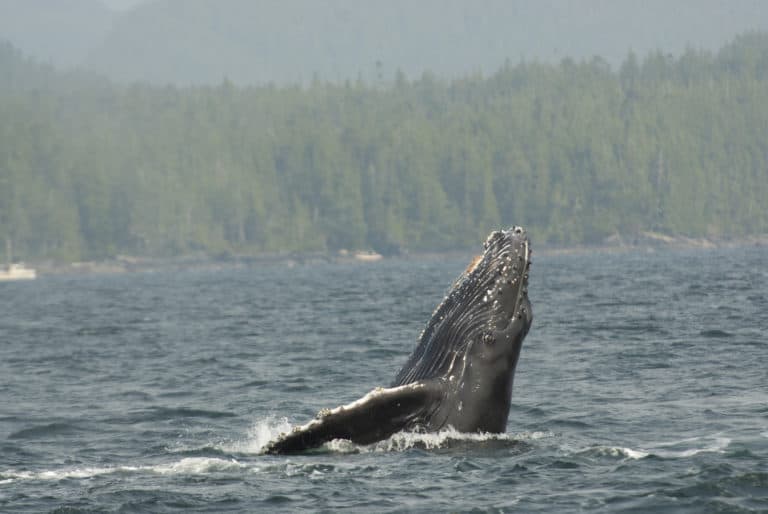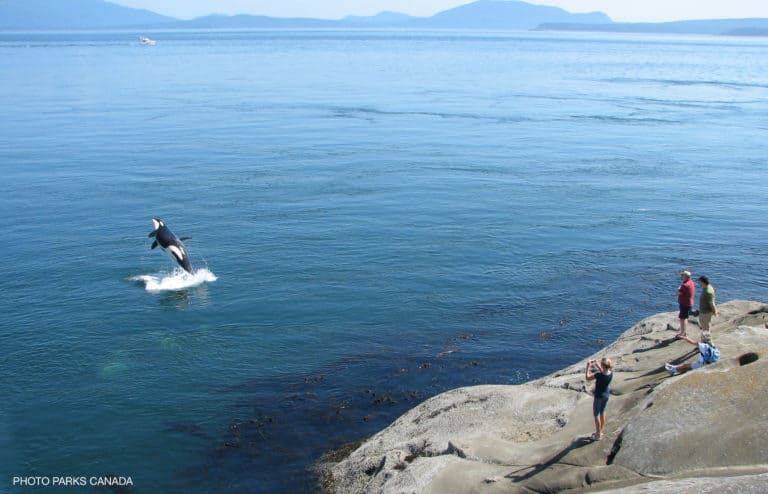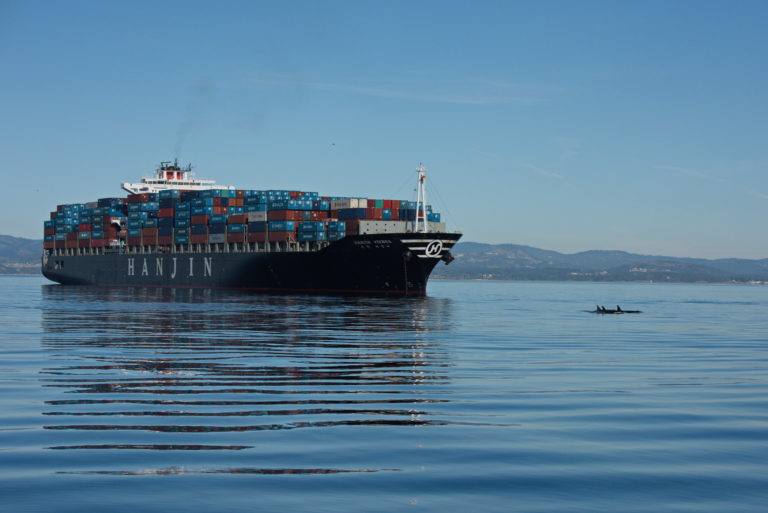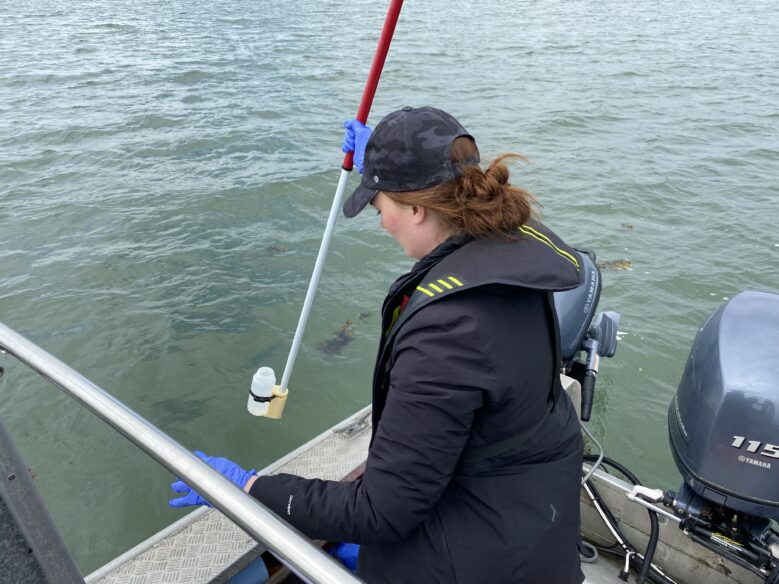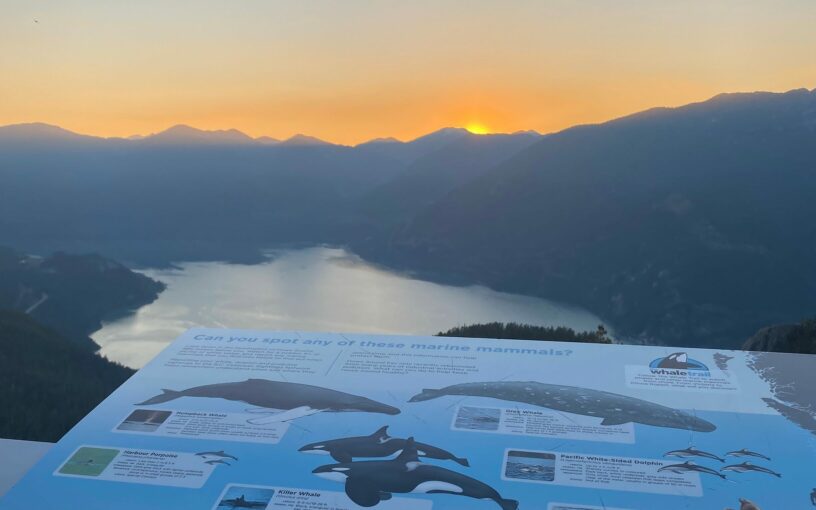
Notes From the Field: Humpback Whales Struck by Vessels in Northern BC
Between July 20 and July 29, there were three reported humpback whale strikes by large vessels in Northern BC waters near Prince Rupert and Kitimat. There have been additional reports of small vessel strikes in the last few weeks. A dead whale was found in Wright Sound on July 30th, though its cause of death has not been confirmed. These tragic accidents – occurring within just ten days – provide an impetus for awareness on how to reduce the threat of collision for whales. With more large whales off BC’s North Coast, and increased vessel traffic, the risk of collision is very real.
Just prior to these vessel strikes, Ocean Pathways Participant Jennifer Kirkpatrick wrote about her experience documenting scarring in humpbacks on the North Coast. Below, she shares her experiences and dives into how you can help protect these amazing marine mammals from harm.
Notes from the field: documenting propellor scarring in humpbacks
By Jennifer Kirkpatrick, Ocean Pathways Placement
On a sunny June afternoon in Chatham Sound, a quick boat trip from Prince Rupert B.C., I joined Ashley and Amy from the Whales Initiative North Coast team aboard the research vessel “Tsitika.” Our mission was to document the whales returning to these highly productive feeding grounds after breeding in Hawaii and Mexico and determine if they were part of the already catalogued 400 in Chatham Sound or new arrivals.
As we scanned the horizon for signs of fins, flukes, or blows, a loud exhale and the distinct scent of whale breath alerted us. Swiftly grabbing our cameras, we positioned ourselves to record the humpback whale’s unique tail fluke. Akin to human fingerprints, the unique shape and markings on each fluke allow us to identify individual whales. Through collaboration with researchers we can match photos of whales in their summer feeding grounds to their winter breeding grounds, 5,000 km away.
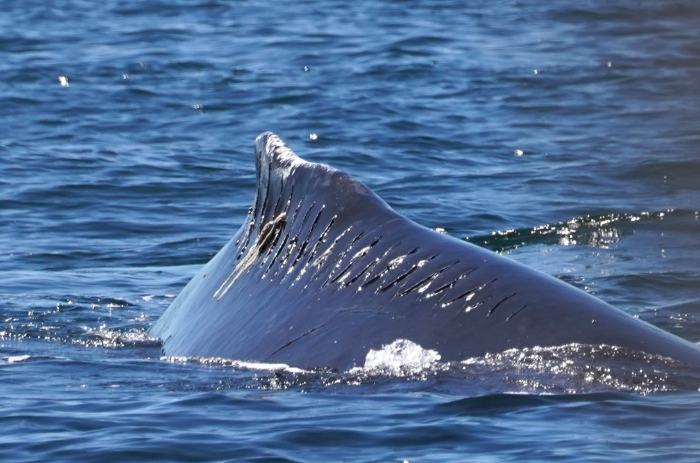
As the whale surfaced to breathe, we immediately noticed fresh zigzag patterned scars on its dorsal surface—a clear indication of a collision with a boat propeller. Photos captured in the moment later confirmed both the extent of the propeller’s damage and that this whale was a new visitor for the season. While documenting a new whale excited us, witnessing the harm inflicted on this creature was a stark reminder of why we work in conservation and the importance of boater awareness.
Unfortunately, encountering whales with propeller scars is not an uncommon sight along our coast. In the days following my initial encounter, our team came across several other whales showing signs of vessel strike scarring. Raza (BCX1852), a whale typically sighted on the inside of Vancouver Island, was spotted foraging near Work Channel on the North Coast. Raza’s deep scars along the dorsal surface made them easily identifiable, even five years after being struck by a propeller in the fall of 2018.
We also encountered TicTac (BCX1296), a humpback whose dorsal fin shows significant scarring, likely due to vessel damage. Similarly, Mangle (BCZ0438) has scarring from a vessel interaction on its dorsal fin and entanglement scarring around its tail stock.
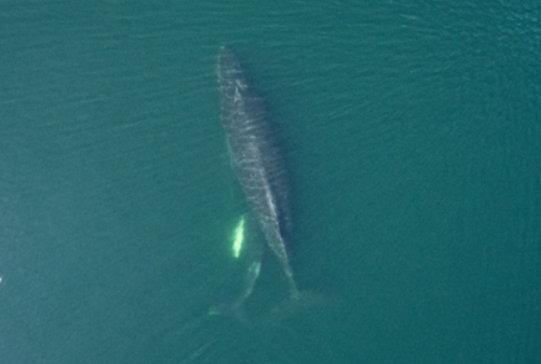
Weighing up to 36,000 kg and reaching 17 meters in length, it’s hard to imagine these ocean giants as vulnerable, but vessel strikes are a serious concern. Humpback whales often engage in “logging,” where they rest at or just below the water’s surface. In this resting state, their respiration rate decreases, and they produce infrequent, smaller blows, making them less visible from above the water. This resting position makes it challenging to spot whales from a distance, increasing the risk of collisions with vessels traveling along the coast. It is crucial for commercial and recreational mariners to remain vigilant on the water, actively searching for fins, flukes, and blows on the horizon to prevent collisions that could harm both whales and humans.
Witnessing whales with significant vessel scarring is a sobering experience. Knowing whales like Raza, TicTak, Mangle, and Opo have had to endure significant physical trauma should serve as a powerful warning for vessel operators.
There are many ways YOU can help protect these animals!
- If you observe an injured, distressed, entangled or dead marine mammal or incident of human-caused marine mammal disturbance in British Columbia, call the Marine Mammal Incident Reporting Hotline immediately at 1-800-465-4336 or VHF Channel 16 in Canada, or the NOAA Fisheries Entanglement Reporting Hotline at 1-877-767-9425 in the United States.
- If you see a whale, dolphin, porpoise (or even sea turtle) in BC, Washington and Alaskan waters, you can report it to the Ocean Wise Sightings Network via free mobile app, or though the website, to alert large vessels of whale presence.
- If you are out on the water, be sure to refresh your knowledge of the laws pertaining to marine mammals in your area to reduce the risk of collisions. Visit seeablowgoslow.org for great resources on how to be a responsible vessel operator on our oceans.
Photos from the field:
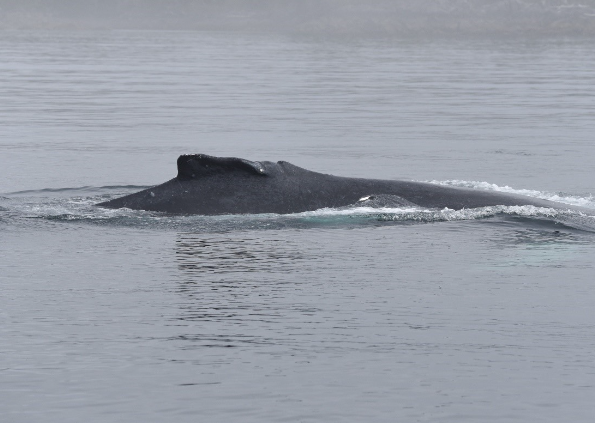



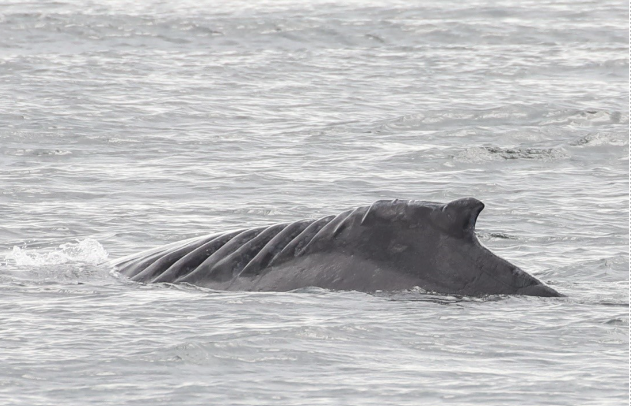
Jenny Kirkpatrick is a 2023 Ocean Pathways ambassador who completed her placement with the Ocean Wise North Coast Cetacean Research Initiative. During her placement, Jenny participated in field work documenting whales in Chatham Sound, doing outreach to educate local mariners about staying safe on the water with whales, and processing acoustic data on harbour porpoises around Prince Rupert Harbour.
About Ocean Pathways
Ocean Pathways is an immersive 3-month program for youth and young professionals, offering in-depth learning and engagement opportunities with oceanic and aquatic conservation efforts across Canada.


